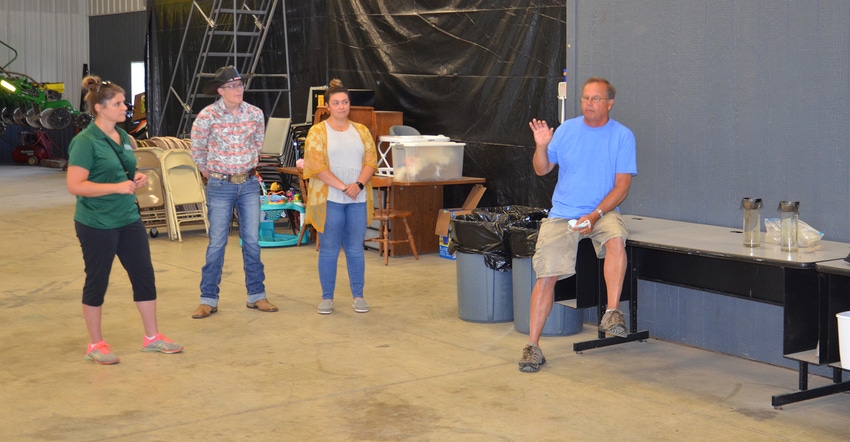
Mike Starkey doesn’t farm like his dad did. He’s confident his father would understand.
“Dad sold corn for just over $3 per bushel in the 1970s,” says Starkey, Brownsburg, Ind. “That’s the same price we’re selling corn for today. I simply couldn’t afford to farm the way Dad did.”
Starkey recently told Indiana State Department of Agriculture staff visiting his farm that his move toward no-till years ago turned out to be his answer to reducing costs and being more efficient. Lower input costs, especially lower costs per bushel produced, allow him to compete today.
“No-till soybeans were relatively easy,” says Starkey, who farms with his nephew and son. “No-till corn was a different story. I tried it in the 1990s and wasn’t satisfied. So, we went back to tillage for corn.”
Unfortunately, the story often ends there. Many farmers don’t give no-till a second chance. “I’m always one who likes to see how other farmers do things, and I talked to people who made no-till work,” he continues. “We made adjustments and made it work too.”
About 15 years ago, Starkey added cover crops, starting with annual ryegrass.
No-till impacts bottom line
How does no-till help Starkey survive with prices his dad received for corn? “We have large equipment, but we don’t need as many tractors and very little tillage equipment versus my dad’s day,” he says. “Our labor costs aren’t as high as they would be if we tilled, and we don’t spend as much on fuel or repairs.”
Another big difference is the amount of commercial fertilizer he buys. Starkey doesn’t apply as much in his system as many people did 20, 30 or 40 years ago. He typically applies far less phosphorus and potassium than Tri-State Fertilizer recommendations suggest.
“Our system is more efficient at utilizing nutrients,” he says. “It shows in our organic matter levels on our soil test reports, too.
“Back when I farmed with Dad, organic matter levels on many of our soils were around 2%,” he continues. “Today, they’re in the 3%-to-4% range on most fields. You don’t make those kinds of changes overnight, but they happen over time. Soils with higher organic matter levels are more productive.”
Better yields
How much more productive are soils today? “My yields have increased dramatically versus when my dad farmed,” Starkey says. “In fact, my average yield has doubled versus 40 years ago.”
Starkey typically plants green for both corn and soybeans. That means he plants into growing cover crops, and then terminates the cover crops after planting.
His crop rotation is also different than it was 25 years ago. Today, he includes nearly 400 acres of wheat, treating it as a cash crop. He works with a consultant who advises him on how to grow high-yield wheat, which makes it more competitive with corn and soybeans.
“It’s still a lower-input crop than corn, and it gives the soil a break,” he adds. “It also lets us plant a 14-way cover crop mix since we can seed the mix earlier than after corn or beans.”
About the Author(s)
You May Also Like




